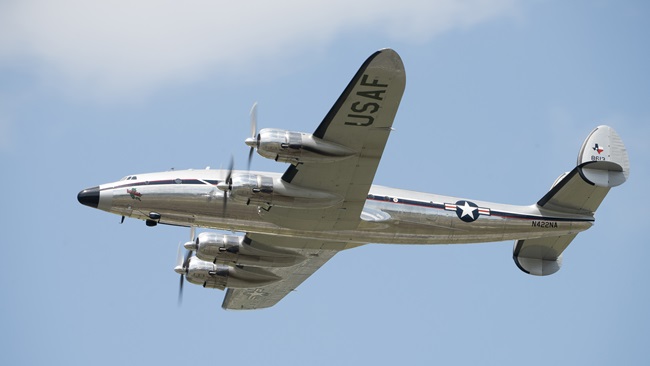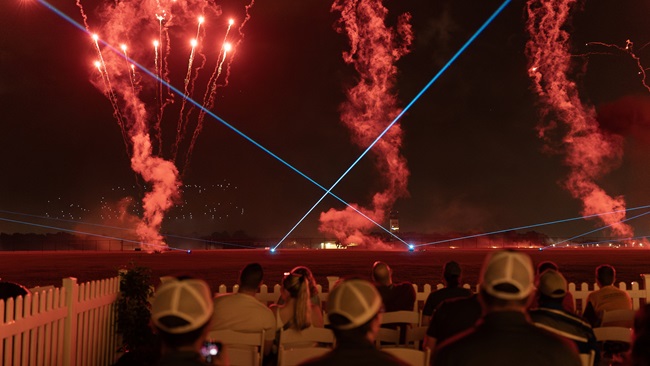2011's fatalities draw air racing, airshow scrutiny
NTSB seeks lessons in airshow, Reno air race deaths
Leave margins. Never direct aerobatic energy toward the crowd. Always have an out. Innumerable safety precautions keep performers and spectators safe at air races and airshows, but in 2011 something went wrong.
Sixteen fatalities from airshow- and air race-related incidents in 2011—including the deaths of 10 spectators at the National Championship Air Races—marred a safety record that had been improving for years, and drew national attention to the safety of the events. While the NTSB investigates the individual events, it took a broader look at how to minimize risk and improve safety at the events in a hearing Jan. 10.
Chairman Deborah A.P. Hersman said the hearing was intended to identify what could be done and is being done to improve airshow and air race safety, not to focus on the specifics of any one crash. Board members and a technical panel asked questions on topics ranging from the qualifications of air bosses and aircraft to the calculation of separation distances between spectators and aircraft.
“Really this is an opportunity for us to gather information, not to come to any conclusions,” Hersman said in a press briefing. She said the board is currently involved in 11 investigations related to airshows and air races.
Five performers died from injuries sustained in U.S. airshow incidents in 2011; the crash of a race plane into the box seat area at Reno’s National Championship Air Races in September killed the pilot and 10 spectators, injuring scores more. The spate of fatalities was particularly shocking after the record of the previous two years: Neither 2009 nor 2010 saw a single U.S. airshow performance fatality, and only one competitor died in an air race crash during that time.
During the hearing, witnesses outlined the growth of safety precautions and procedures that contributed to a decades-long decline in airshow fatalities; how air race and airshow coordinators apply lessons learned from year to year; and the details of operations at specific events.
The accident in Reno was the first with that scale of casualties at an aviation event since 1961, when an accident at a Colorado airshow killed 20 in the crowd. An airshow safety program began in response to that accident, International Council of Air Shows (ICAS) President John Cudahy told the board, and safety at the shows has been improving ever since. The accident rate dipped further after ICAS took over pilot evaluations and administration of the Aerobatic Competency Evaluation (ACE) program in 1990, he added.
Airshows rely on separation distance from the crowd, a sterile aerobatic box, a prohibition on directing aerobatic energy toward the crowd, and a rigorous industry evaluation program to protect attendees, Cudahy said. ICAS uses a safety management system and regularly evaluates show safety, he said—resulting in recent changes such as the implementation of a “sacred hour” before performances when performers are protected from distractions.
Air race organizations also regularly review safety; Reno Air Race Association President Mike Houghton said his organization does an annual debrief to evaluate the year’s event and suggest solutions to safety issues. It doesn’t take an accident to spur change, but the organization has changed the races in response to incidents and accidents in the past.
The FAA, which has an inspector in charge on site for most airshows and air races, also evaluates safety after an accident.
“After any incident or accident, we look at our regulatory structure, … whether there was something that we missed. Something that we didn’t account for or didn’t expect,” said FAA Flight Standards Service Deputy Director John McGraw. He said the FAA was looking at changes to guidance for the two types of events, and recognizes a need to clarify the differences between airshows and air races.
Board members pressed the witnesses for suggestions to improve safety at aviation events. “Just because you acknowledge something can improve doesn’t mean it’s not safe now,” explained member Mark Rosekind. Board members inquired about whether an air boss accreditation system could provide a higher level of safety, a suggestion that resurfaced throughout the day. Members asked whether race and airshow pilots were subject to stricter medical requirements than other pilots, and if the rules for such events are strict enough. But witnesses said further regulation was not the answer.
Cudahy emphasized that the United States’ rules for airshow safety are the most conservative in the world, and that changes over the last 60 years have provided more robust protections to pilots and spectators. Cooperation between the industry and FAA are moving the ball forward more than additional regulations could, he said.
“We’re still not where we want to be,” he said. But, “are we regulated enough? I think we are.”


